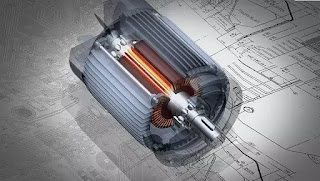BY AFZAL YOUSAF
Power electronics components in electric vehicles plays an indispensable role in power exchange between components like Battery, BMS, Motor, electrical accessories etc. Even though electric vehicles requires less maintenance due to lacking more moving parts but power electronics components can become failure due to various reasons.
In this article you can read possible Power electronics faults in Electric vehicles and method to diagnose the faults.
Power Electronics components in EVs basically constitutes Power elements and power switches. From these kinds, the power electronic components of EVs are classified into:-
- Converter and Inverter
- Protection components
In converter and Inverter section we can usually see DC-DC converter, DC-AC converter (Inverter) and AC-DC converter (Rectifier). And in Protection components mainly consists of connectors, Relays, Brake resistor etc.
Common faults occurring in EV Power electronics are:-
- Open switch fault
- Short switch fault
Open Switch faultIn open switch fault usually DC Current offset takes place. To indicate this open switch fault current and voltage fault diagnosis can be used. They are:-
- Three phase current mean value
- Current vector Trajectory
- Voltage comparison in time domain
- Voltage sensing by lower switch.
The 3-phase current is the most commonly used fault indicator in the open switch fault diagnosis. Current vector trajectory and 3-phase voltage can also be utilized as effective detection parameters.
Modified normalized DC current method, which is highly efficient, is developed on the basis of normalized DC current method and Park’s method. It uses the current vector trajectory to determine the faulty signals. Wavelet-neural network method, which is intelligent and high cost method, is applied by using wavelet transform and neural network to observe the 3-phase current.
The 3-phase voltage can also be detected in open switch faults by comparing the measured voltage with their reference voltage as a residual. It is called voltage comparison in time domain. Extra sensor is needed in this method.
Besides these in voltage measurement method, the inverter pole voltage measurement, machine phase voltage measurement, system line voltage measurement, and machine neutral voltage measurement are identified as efficient methods.
Short Switch fault
In short switch fault diagnosis also include current and voltage diagnosis. This fault will produce non-zero DC current component. Unlike open switch fault, short switch faults could cause failure in a very short period. So it requires highly efficient diagnostic system. The fault can be indicated by:-
- Phase current
- Device current
- Gate voltage
The simplest idea for the short switch fault detection is to install a fast-acting fuse to isolate the faulted switch and it mainly focus on short switch isolation. Requires extra expense for fuse installation.
Another approach is a field programmable gate array based experiment which manages to detect the short switch faults within less than 10 μs. This technique efficiently conquers the shortcoming of short switch faults that require rapid reaction. Voltage and time criterion uses two comparators to detect DC-link voltage and time that during which fault occurs.
Other fault diagnosis approaches include de-saturation method, current mirror method and gate voltage sensing method. Current mirror method is costly and gate voltage sensing is complicated compared to other methods.
As a summary we can say Power switches is an important component of power electronics in EVs. So the power electronics fault diagnostic system mainly consists of open switch and short switch fault detection. Compared with open switch fault, short switch fault has a higher demand in the operation speed of diagnostic system.
Hope this article helps you to understand some basics of EV power electronics faults and diagnosis.
Credits:- Journal of Asian electric vehicles and authors.
Share your thoughts and queries. Keep Reading.








What are the tools used for such fault analysis
ReplyDelete